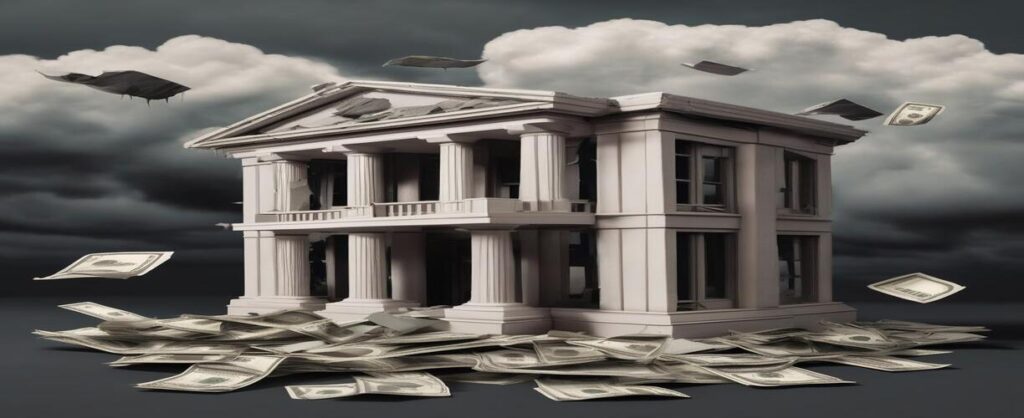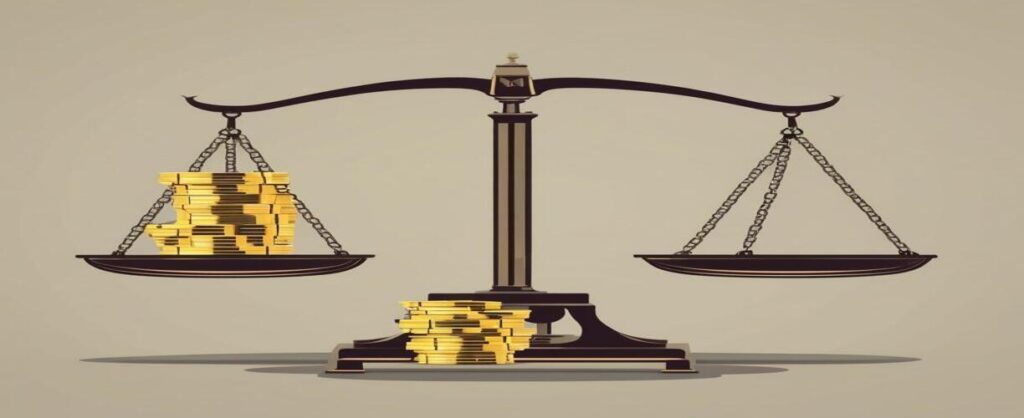
**Bad debt** refers to debt that is considered harmful to an individual’s or a business’s financial health. It typically involves borrowing that does not lead to an increase in net worth or financial stability and can negatively impact one’s credit score and overall financial situation.
TYPES OF BAD DEBT
There are several types of debts, each serving different purposes and having various implications for borrowers. Understanding the different types can help individuals manage their finances more effectively. Here’s a breakdown of the main categories of debt:
### 1. **Secured Debt**
– **Definition**: Debt backed by collateral, which the lender can claim if the borrower defaults on the loan.
– **Examples**:
– **Mortgages**: Loans used to purchase real estate, secured by the property itself.
– **Auto Loans**: Loans for purchasing vehicles, secured by the car.
– **Secured Credit Cards**: Credit cards backed by a cash deposit, which serves as collateral.
### 2. **Unsecured Debt**
– **Definition**: Debt that is not backed by any collateral. Lenders rely on the borrower’s creditworthiness to assess risk.
– **Examples**:
– **Credit Cards**: Revolving credit that does not require collateral, typically associated with higher interest rates.
– **Personal Loans**: Loans obtained for various personal needs without unsecured collateral.
– **Medical Bills**: Charges for medical services that are classified as unsecured debt if not covered by insurance.
### 3. **Installment Debt**
– **Definition**: Debt that is repaid in fixed monthly payments over a specified period.
– **Examples**:
– **Mortgages**: Repaid in fixed monthly installments over several years.
– **Auto Loans**: Typically paid back over a term of 3 to 7 years in fixed payments.
– **Student Loans**: Repaid in a set number of monthly installments, often with options for deferment or income-driven repayment.
### 4. **Revolving Debt**
– **Definition**: Debt that allows borrowers to borrow money repeatedly up to a certain limit and pay it back over time, often with flexible repayment terms.
– **Examples**:
– **Credit Cards**: Borrowers can carry a balance and continue to use their card as long as they stay within their credit limit.
– **Home Equity Lines of Credit (HELOC)**: Allows homeowners to borrow against the equity in their homes, typically with flexible repayment options.
### 5. **Mortgage Debt**
– **Definition**: A long-term secured loan used specifically for buying real estate.
– **Types**:
– **Fixed-Rate Mortgages**: Loans with a fixed interest rate for the duration of the loan.
– **Adjustable-Rate Mortgages (ARMs)**: Loans with interest rates that can change periodically based on market conditions.
### 6. **Consumer Debt**
– **Definition**: Debt incurred by individuals primarily for personal, family, or household purposes.
– **Examples**:
– **Credit Card Debt**: Balances carried on credit cards typically for purchases.
– **Personal Loans**: Loans taken for personal expenses, such as travel or home repairs.
### 7. **Commercial Debt**
– **Definition**: Debt taken on by businesses to fund operations, expansion, or other business activities.
– **Examples**:
– **Business Loans**: Loans provided specifically for business purposes.
– **Business Lines of Credit**: A revolving credit account used to finance short-term operational needs.
### 8. **Government Debt**
– **Definition**: Debt issued by government entities to finance various projects.
– **Examples**:
– **Treasury Bonds**: Long-term debt securities issued by the U.S. Department of the Treasury to finance government spending.
– **Municipal Bonds**: Bonds issued by local or state governments, often used to fund public projects.
### Conclusion
Understanding the different types of debts is essential for effective financial management, as each carries its own risks and benefits. Borrowers should be aware of their financial situations and capabilities before taking on any type of debt. If you have specific questions about a particular type of debt or need advice on managing debts, feel free to ask!
CHARACTERISTICS OF BAD DEBT:

1. **High-Interest Rates**: Bad debt often comes with high-interest charges, making it difficult to repay. This is common with credit cards and certain personal loans.
2. **Non-Asset-Backed Debt**: Bad debt does not finance a productive asset or investment. Instead, it tends to be used for immediate consumption or unnecessary expenses, such as buying luxury goods that depreciate quickly.
3. **Overwhelming Debt Burden**: If debt payments become a significant portion of a person’s income and lead to financial strain, it is classified as bad debt.
4. **No Return on Investment**: Borrowing money for items that do not generate income or appreciate over time (like vacations or expensive clothing) is often considered bad debt.
### Common Examples of Bad Debt:
1. **Credit Card Debt**: Carrying a balance on high-interest credit cards can lead to accumulating debt that can quickly spiral out of control.
2. **Personal Loans**: Unsecured personal loans used for non-essential purchases, such as vacations or luxury items, which do not contribute to financial growth.
3. **Payday Loans**: These short-term loans often come with exorbitant interest rates and fees, making them extremely costly to repay.
4. **Auto Loans for Depreciating Cars**: Financing new cars that lose value rapidly can lead to negative equity, especially if the loan balance exceeds the vehicle’s worth.
5. **Consumer Financing**: High-interest financing offered for appliances or furniture that does not appreciate in value.
### Distinction from Good Debt:
– **Good Debt**: Refers to debt taken on to acquire assets that appreciate over time or generate income. Examples include student loans (for education), mortgage loans (for purchasing a home), and business loans (for investing in a business).
MANAGING BAD DEBTS

### Managing Bad Debt:
Understanding the concept of bad debt is essential for effective financial management. While debt can be a useful tool when managed responsibly, it’s important to differentiate between good and bad debt to ensure that your financial decisions contribute positively to your overall financial health.
There are several effective methods to help manage and reduce it. Here are some strategies to consider:
### 1. **Create a Budget**
– **Track Income and Expenses**: Establish a clear picture of your financial situation by tracking all sources of income and expenses.
– **Identify Unnecessary Expenses**: Look for areas where you can cut back to free up funds for debt repayment.
### 2. **Prioritize Debt Repayment**
– **Debt Snowball Method**: Focus on paying off the smallest debts first while making minimum payments on larger debts. Once the smallest debt is paid off, move to the next larger debt.
– **Debt Avalanche Method**: Prioritize debts with the highest interest rates first, which can save you money in the long run.
### 3. **Negotiate with Creditors**
– **Discuss Payment Plans**: Contact creditors to negotiate a more manageable payment plan or to request lower interest rates.
– **Settle for Less**: In some cases, you may be able to negotiate a settlement for less than the full amount owed, but consider the potential impact on your credit score.
### 4. **Consolidate Debt**
– **Debt Consolidation Loan**: Consider taking out a personal loan to pay off multiple debts. This can lower your interest rate and simplify repayments into a single monthly payment.
– **Balance Transfer Credit Card**: If you have credit card debt, transferring balances to a card with a lower interest rate (or a promotional 0% APR) can help reduce interest costs.
### 5. **Seek Professional Help**
– **Credit Counseling**: Work with a certified credit counselor who can help you develop a debt repayment plan and offer guidance on managing your finances.
– **Debt Management Plan (DMP)**: Some credit counseling agencies offer DMPs, which involve negotiating with creditors to lower interest rates and fees as you make regular payments to the agency.
### 6. **Increase Income**
– **Get a Part-Time Job**: Consider taking on a part-time job or freelance work to generate extra income that can be applied to debt repayment.
– **Sell Unneeded Items**: Sell items you no longer need, either online or through garage sales, to raise extra cash.
### 7. **Make Extra Payments**
– **Pay More than the Minimum**: Whenever possible, pay more than the minimum required payment to reduce the principal balance faster and decrease interest charges over time.
### 8. **Avoid Accumulating More Debt**
– **Limit Credit Card Use**: Try to avoid using credit cards while paying down existing debt.
– **Build an Emergency Fund**: Aim to save a small emergency fund (e.g., $500-$1,000) to help cover unexpected expenses without resorting to additional debt.
### 9. **Stay Committed and Motivated**
– **Set Realistic Goals**: Define specific financial goals and timelines for debt repayment to keep yourself accountable.
– **Track Progress**: Monitor and celebrate your progress to stay motivated, whether it’s paying off a debt or reaching a savings milestone.
### 10. **Consider Bankruptcy as a Last Resort**
– If debt is unmanageable and solutions aren’t effective, consult a bankruptcy attorney to understand your options. Bankruptcy can provide a fresh start, but it has long-term impacts on your credit.
By implementing these strategies, you can take control of your financial situation and work toward reducing or eliminating bad debt. It’s important to evaluate your personal circumstances and choose the methods that best suit your needs.